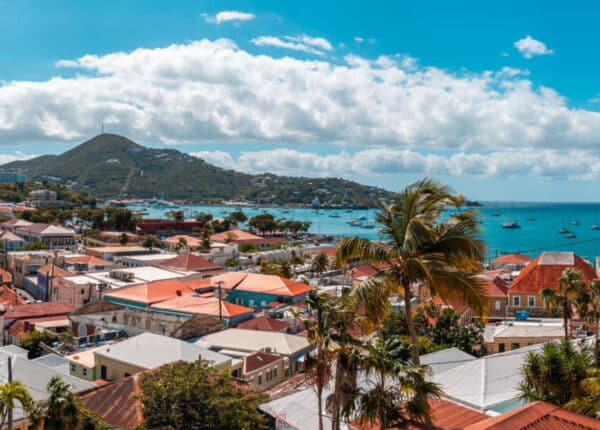By Marcia Forbes, PhD
CJ Contributor
Shocked by Sinclair
I was shocked at Gary Sinclair’s seeming honesty and openness as he responded to Journalist Dionne Jackson Miller’s probing questions about cable TV and copyright infringements.
Sinclair is the head honcho of the newly merged CWC/Columbus Communication conglomerate that sees the coming together of the Caribbean region’s leading telco (CWC/LIME) and its leading cable television and Broadband speed Internet service provider (Columbus/FLOW).
If they had pointed in my direction, the TV cameras would have captured me open-mouthed as I sat on set listening to the video insert during the live broadcast of ‘All Angles’ hosted by Jackson Miller on Television Jamaica (TVJ).
Sinclair promised to make every effort to legally secure those US channels that are loved by Jamaican cable TV subscribers. He plans to legalize them and thereby avoid lawsuits from rights holders.
But Will He Deliver?
While at first he sounded confident that this would be achieved, as the interview progressed Sinclair edged his bet and was more measured.
After all, whatever has so far obstructed agreements for Caribbean cable operators to access certain US channels/networks is not going to suddenly disappear.
One expects that tough negotiations will be required. Then too, depending on the costs, Sinclair may be forced to make a business decision against the purchase of certain channels, as much as they may be loved. Jamaican cable subscribers have already indicated that they expect rate reductions, not increases.
With some safety in subscriber numbers based on their penetration across islands and a deep-pocket, CWC/Columbus is in a stronger position than perhaps any other cable operator in the region to make a credible pitch for the right to air US cable channels formerly banned or not available. Then too, technology is on their side and likely to play a role in Sinclair’s negotiations.
Tech Tide Sweeps TV
While the USA is busy ‘patrolling’ piracy of its cable TV signals, with Trinidad, Barbados and Jamaica recently listed among 24 countries on its watch list, a technology tide is sweeping across television and encompassing all in its wake, whether free-to-air, cable or cord-cutters, and with no regard for geographical local. This tech tide is video live streaming via your smartphone or tablet – your mobile device.
Live Streaming via Cell Phones
Meerkat and Periscope, two video live streaming applications (apps), were publicly launched only weeks ago in March, 2015. Yet Cable TV has already started to feel their effect. The May 2nd Mayweather/Pacquiao Boxing Match is a case in point.
Reportedly overwhelmed by last-minute purchases of the pay-per-view signal of this extensively promoted match, cable systems delayed broadcast of the feature presentation by over half an hour.
With growing complaints from those who wanted to pay to view but couldn’t, and in this ‘share economy’ where people are only too happy to share what they are doing, listening to or watching, Periscope users who had purchased the boxing match (or were perhaps at the MGM in Vegas, the match venue) pointed their mobiles to their TV screens (or the boxing ring) and shared. One periscope live stream in Spanish is reported to have been supported by over ten thousand (10,000) at its peak viewership.
Piracy Charges Generate Snickers
Online headlines blared:
“Periscope, Meerkat piracy hits Mayweather-Pacquiao bout”
“Online piracy cuts into HBO profit on Mayweather-Pacquiao …”
“Live streams of Mayweather-Pacquiao fight latest battle in fight against online piracy”
“Mayweather-Pacquaio fight made Periscope the new Napster …”
“Periscope’s magic is interactivity, not just live …”
“Periscope a focus in concern over lost Mayweather-Pacquiao PPV orders”
Meanwhile, Caribbean people on Twitter (Twitter owns Periscope) could be seen snickering in their tweets. With the recent pounding of the region by the USA over copyright infringement, tweeps were somewhat amused to see that piracy is alive and well throughout the world and being made even more possible via emerging technologies. These technologies erase artificial boundaries and make arguments by the USA about domestic channels seem redundant.
Periscope & the Press Association of Jamaica
Within days of the ‘big boxing match’, billed as the ‘fight of the century’, and the screaming headlines about signal piracy by video live streaming apps, the Press Association of Jamaica (PAJ) hosted a panel discussion on the Access to Information Act.
With the wonders of Periscope and Meerkat top of mind and being unable to be physically present at the early Monday morning session hosted at the Caribbean Institute of Media and Communication (CARIMAC), I enquired whether there would be live streaming. To my disappointment, the answer was ‘no’.
Pericope or Meerkat could have helped the PAJ and CARIMAC to share information from the forum in a timely and cost-effective way. These entities need to be seen as keeping abreast of technologies that are relevant to their core business – media and communication.
On May 5th I opened a Periscope account and posted my first video live stream, a two minute clip of me walking through the office and talking to our summer interns. ‘Periscoping’ is not hard and as I’ve often said, “I’m not a techie.”
Having followed a number of news streams and watched a few of them over a 24 hour period, it’s clear that video live streaming has taken off and is already embedded in the lives of many. As at late afternoon on May 6th, Huffington Post had 101,308 followers on Periscope, CNN 94,216, Wall Street Journal 71,719 and Mashable leading them at 114,164 followers. BBC seemed to be just getting into the act, with BBC Sport attracting 20,708 followers and beating out BBC Click (17,918 followers), the BBC’s “flagship tech show”.
Lucky Caribbean Cable Operators?
Gary Sinclair of CWC/Columbus, especially against the backdrop of the recent experiences with Periscope where there were reportedly over 60 live video streams of the boxing match, while rights holders were only able to shut down about a half of them, may just have luck on his side.
He should be able to convincingly argue with US rights holders that what existed in the past is not necessarily relevant or desirable in today’s borderless world and ever emerging communication technologies. Lines drawn by geographical locations and arguments regarding domestic versus international channels belong to an earlier era.
Interesting too, even the name ‘cable’ is now being regarded as redundant. Go for it Gary. Get the legal rights for those much-loved cable channels. The Caribbean is watching!
Dr Marcia Forbes, a Caribbean Journal contributor, is a media specialist, the co-owner of multimedia production company Phase 3 Productions Ltd and Adjunct Senior Lecturer, Caribbean Institute of Media & Communication, University of the West Indies, Mona. She is the author of Music, Media & Adolescent Sexuality in Jamaica and the recently-released Streaming: Social Media, Mobile Lifestyles.
Follow Dr Marcia Forbes on Twitter: @marciaforbes







